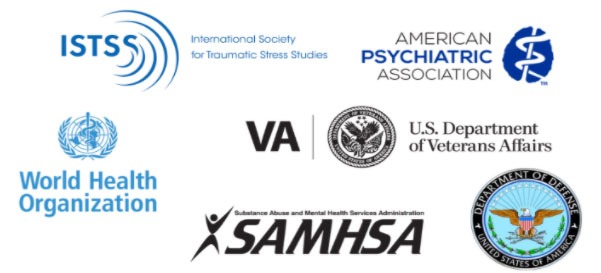Experiencing EMDR Therapy
What Is EMDR Therapy?
After the therapist and client agree that EMDR therapy is a good fit, the beginning sessions will involve discussing what the client wants to work on and improving the client’s ability to manage distress.
When ready for the next phases of EMDR therapy, the client will be asked to focus on a specific event. Attention will be given to a negative image, belief, emotion, and body feeling related to this event and then to a positive belief indicating the issue was resolved.
While the client focuses on the upsetting event, the therapist will begin sets of side-to-side eye movements, sounds, or taps. The client will be guided to notice what comes to mind after each set. They may experience shifts in insight or changes in images, feelings, or beliefs regarding the event.
The client has complete control to stop the therapist at any point if needed. The sets of eye movements, sounds, or taps are repeated until the event becomes less disturbing.
EMDR may be used as an adjunctive therapy with a separate therapist, or as a treatment all by itself
How Long Does EMDR Therapy Take?
The goal of EMDR therapy is to completely process the traumatic experiences that are causing problems and to include new ones needed for full health. The amount of time it will take to complete EMDR treatment for traumatic experiences will depend upon the client’s history. Complete treatment of a single EMDR trauma target involves a three-pronged protocol to alleviate the symptoms and address the complete clinical picture.
The three prongs include:
- past memories
- present disturbance
- future actions
Although EMDR therapy may produce results more rapidly than other forms of therapy, speed is not the goal of therapy, and it is essential to remember that every client has different needs. For instance, one client may take weeks to establish sufficient feelings of trust (Phase 2), while another may proceed quickly through the first six phases of treatment only to reveal something even more important that needs treatment.
"Processing" in EMDR Therapy
“Processing” does not mean talking about a traumatic experience. “Processing” means setting up a learning state that will allow experiences causing problems to be “digested” and stored appropriately in your brain. That means that what is useful to you from an experience will be learned and stored with appropriate emotions in your brain and can guide you positively in the future.
The inappropriate emotions, beliefs, and body sensations will be discarded. Negative emotions, feelings, and behaviors are generally caused by unresolved earlier experiences pushing you in the wrong direction. The goal of EMDR therapy is to leave you with the emotions, understanding, and perspectives that will lead to healthy and useful behaviors and interactions.
EMDR Therapy is a Recognized Effective Treatment for PTSD

Ask Us A Question
EMDR FAQ
EMDR therapy does not require talking in detail about the distressing issue or
completing homework between sessions. EMDR therapy, rather than focusing on changing the emotions, thoughts, or behaviors resulting from the distressing issue, allows the brain to resume its natural healing process.
EMDR therapy is designed to resolve unprocessed traumatic memories in the brain. For
many clients, EMDR therapy can be completed in fewer sessions than other
psychotherapies.
Our brains have a natural way to recover from traumatic memories and events. This process involves communication between the amygdala (the alarm signal for stressful events), the hippocampus (which assists with learning, including memories about safety and danger), and the prefrontal cortex (which analyzes and controls behavior and emotion). While many times traumatic experiences can be managed and resolved spontaneously, they may not be processed without help.
Stress responses are part of our natural fight, flight, or freeze instincts. When distress from a disturbing event remains, the upsetting images, thoughts, and emotions may create an overwhelming feeling of being back in that moment, or of being “frozen in time.” EMDR therapy helps the brain process these memories, and allows normal healing to resume. The experience is still remembered, but the fight, flight, or freeze response from the original event is resolved.
EMDR therapy helps children and adults of all ages. Therapists use EMDR therapy to address a wide range of challenges:
- Anxiety, panic attacks, and phobias
- Chronic Illness and medical issues
- Depression and bipolar disorders
- Dissociative disorders
- Eating disorders
- Grief and loss
- Pain
- Performance anxiety
- Personality disorders
- Post-Traumatic Stress Disorder (PTSD) and other trauma and stress-related issues
- Sexual assault
- Sleep disturbance
- Substance abuse and addiction
- Violence and abuse
EMDR therapy is a mental health intervention. As such, it should only be offered by properly trained and licensed mental health clinicians. EMDRIA does not condone or support indiscriminate uses of EMDR therapy such as “do-it-yourself” virtual therapy.
In the late 1980s, Francine Shapiro, Ph.D., discovered a connection between eye movement and persistent upsetting memories. With this personal insight, she began a lifelong study and development of Eye Movement Desensitization and Reprocessing (EMDR) therapy.
Over the years, and in the face of initial skepticism, Dr. Shapiro’s work developed from a hypothesis to a formal therapy process. EMDR therapy has been demonstrated to be effective for treating trauma in randomized clinical trials, case studies, and millions of clinical hours treating trauma and trauma-related disorders across the globe. The American Psychiatric Association, the U.S. Department of Veterans Affairs (USVA) and Department of Defense (USDOD), the United Kingdom’s National Institute for Health Care and Excellence (NICE), and the World Health Organization (WHO), multiple global organizations now recognize the effectiveness of EMDR therapy that Dr. Shapiro developed.
Most recently, the public acceptance of EMDR therapy was illustrated when Prince Harry reported that he engaged in EMDR therapy to treat trauma from his childhood. Sandra Bullock also opened up about using EMDR therapy to treat trauma from an at-home break-in.
Dr. Shapiro encouraged the foundation of EMDRIA, which comprises more than 15,000 mental health professionals who use EMDR therapy in their clinical practice to treat many conditions that impact mental health. Dr. Shapiro died in 2019, but her legacy of trauma-informed mental health care lives on in the EMDR therapists, researchers, and patients for whom EMDR therapy heals.

Experiencing EMDR Therapy
After the therapist and client agree that EMDR therapy is a good fit, the client will work through the eight phases of EMDR therapy with their therapist.
Attention will be given to a negative image, belief, emotion, and body sensation related to this event, and then to a positive belief that would indicate the issue was resolved.
EMDR may be used as an adjunctive therapy with a separate therapist, or as a treatment all by itself.
